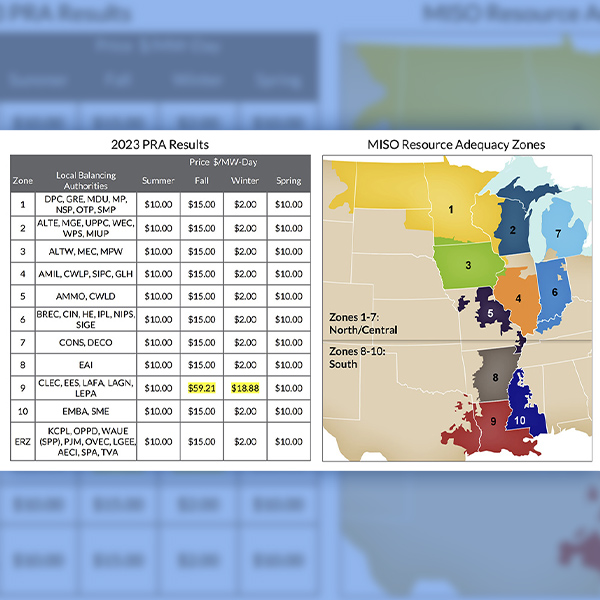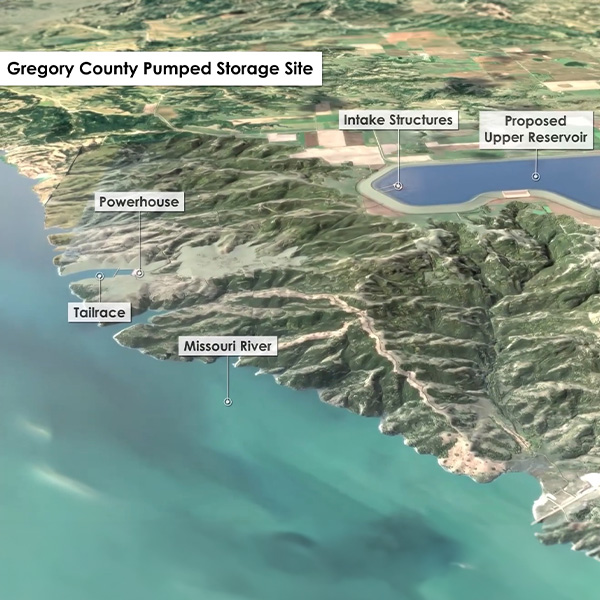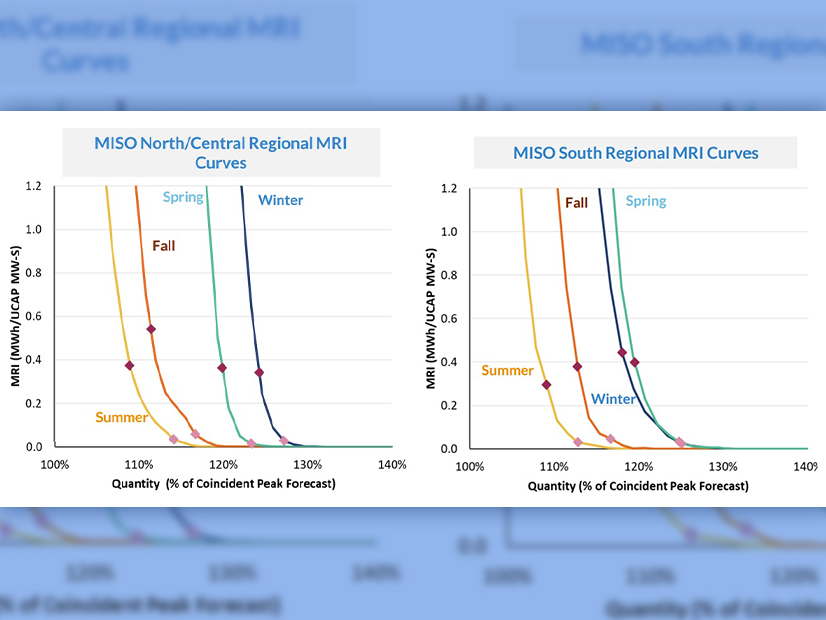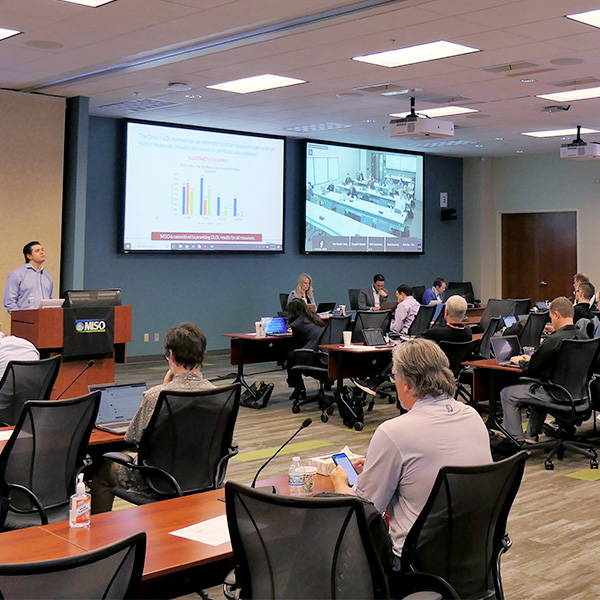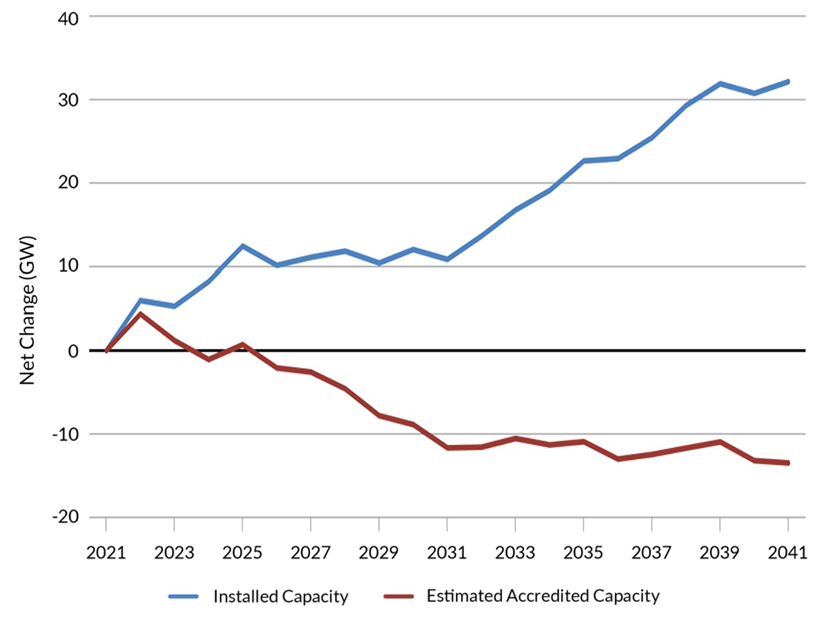MISO Resource Adequacy Subcommittee (RASC)
State regulators of MISO South are withholding support for MISO’s plan to implement a sloped demand curve in its capacity auctions based on a proposed option for states to shield themselves from the effects.
MISO is holding to its plan to enact a widescale marginal capacity accreditation while swapping risky hours for peak load to calculate its reserve margin requirements.
In the wake of MISO’s first seasonal capacity auction, members have asked the RTO to improve its generator outage rules, preliminary data sharing and the registry tool used to track capacity.
MISO will evaluate through the end of the year how it can measure and encourage six generating attributes that it says are necessary to its system operations.
MISO said that a sloped demand curve applied to its recent seasonal auction would have boosted summer clearing prices as much as sixfold.
FERC approved MISO’s reworked ratio for use in its capacity auction a day before MISO began accepting offers on the postponed auction.
MISO’s attempt to justify a new resource accreditation process gave way to heated debate over how to best alleviate the footprint’s reliability challenges.
Less than a year after it got permission to debut a new availability-based accreditation, MISO is proposing to reformulate how it accredits its resources.
MISO told stakeholders that it is not yet able to make “quantifiable conclusions” about the amount of capacity available for the 2023-24 planning year.
MISO said its members may need to build up to 200 GW in new installed capacity by 2041 to meet reserve requirements while achieving renewable targets.
Want more? Advanced Search


